This stretch of shore on the southeast end of Nong Han lake was settled since at least the Dvaravati period and once featured a Khmer temple, though very little of it remains. The Wat Pa Eo Kan Ancient Site (แหล่งโบราณคดีวัดป่าเอวขันธ์), as it’s usually called, sits at the heart of its namesake modern temple, and a large, open-air wihan was built right on top of the toppled ruins, meaning the site is now buried under concrete and all that’s left visible here is a pedestal and a few spare blocks being used around the wihan.
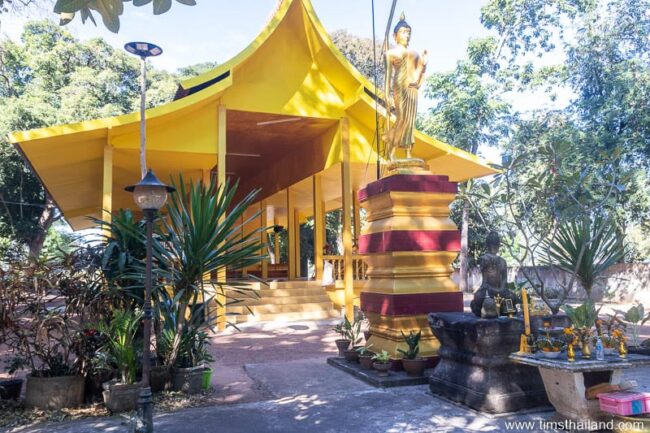
Alongside this wihan to the south, a few dozen laterite blocks have been used to frame a platform for a pair of Phra Sangkajai statues.
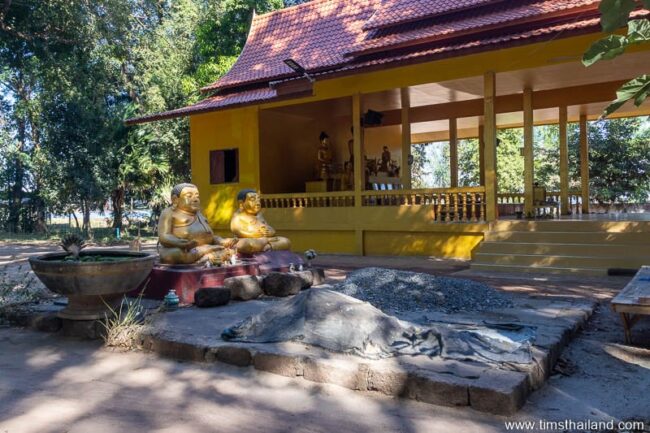
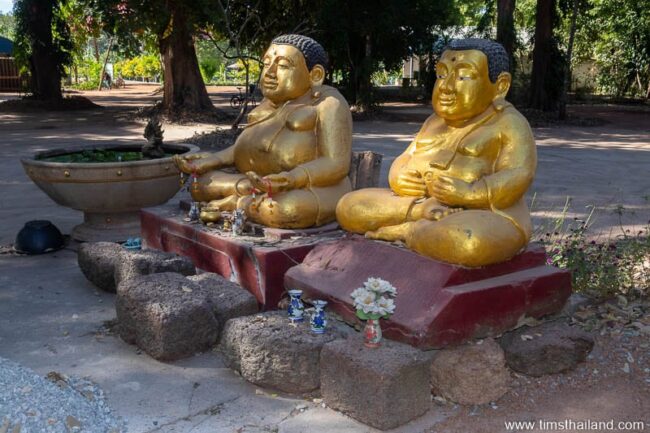
Right in front is a large pedestal, its size suggesting that this may have been an important temple at some point. Whatever statue or linga it held is gone, but an evocative Buddha statue sits on it now. The flat nose and folded robe above its lap indicate it is Dvaravati-era, not Khmer. Sitting on its right-hand is the heavily damaged core of a former statue. You can just make out traces of carving, but not nearly enough is left to even guess what it was. Also note how the walking Buddha’s triple-tiered platform imitates the ancient one.
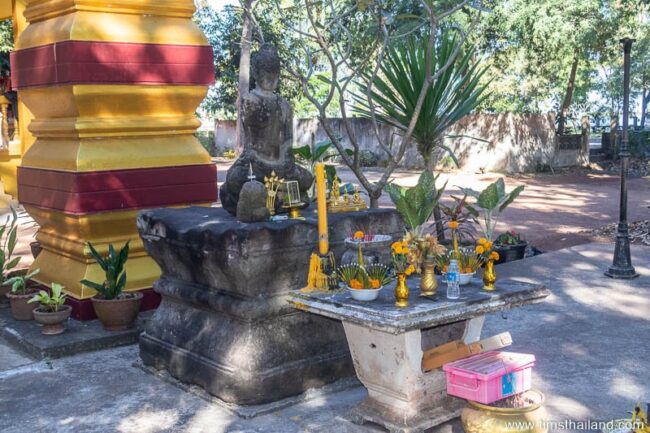
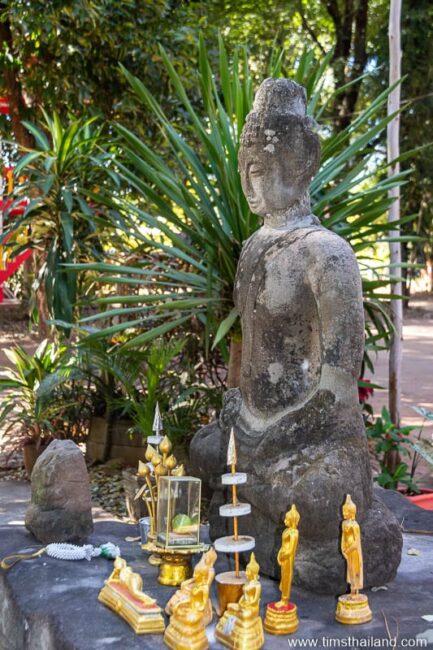
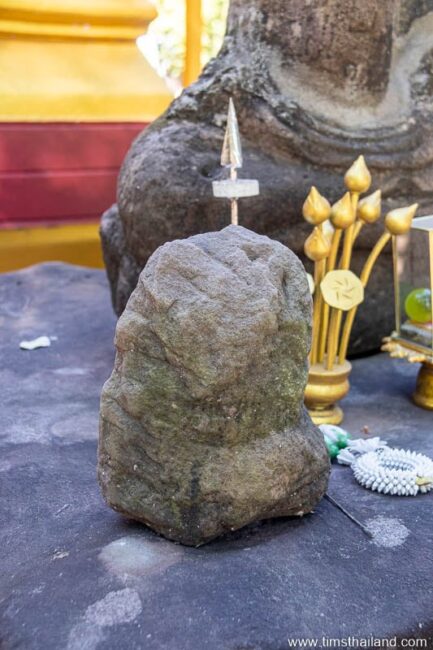
Finally, to the north, people have placed a single sandstone block with a corner cut out of it (Indicating it was used in the building’s construction.) and two laterite blocks in front of the Guanyin and Phra Siwali statues respectively for placing offerings.
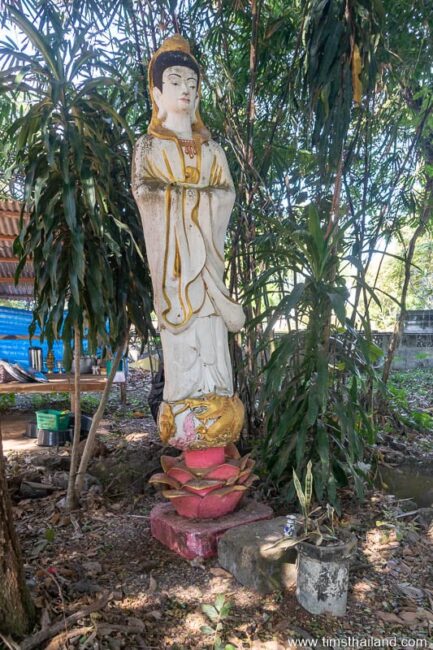
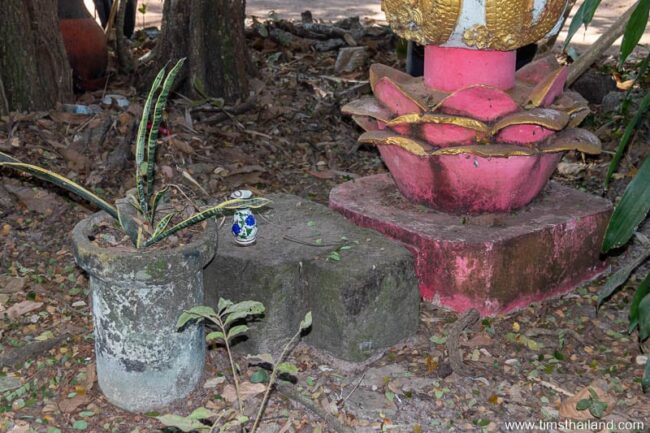
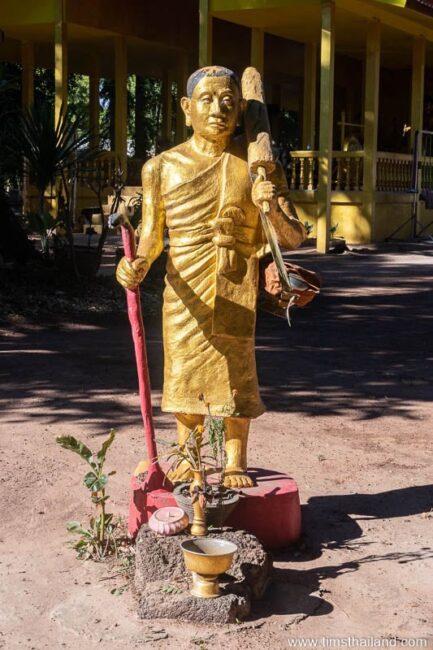
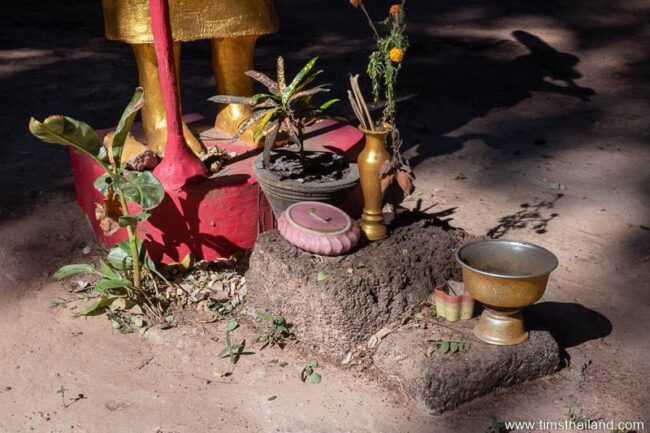
Several artefacts found at the site were moved to the next temple up the shore, Wat Klang Sri Chiang Mai (วัดกลางศรีเชียงใหม่), which has its own historic ruin, a completely collapsed Lan Chang ubosot, and a small museum holding a variety of objects from around the area. When you walk in, you’ll see two sandstone blocks from the Wat Pa Eo Kan site alongside some petrified wood and a piece of a Dvaravati bai sema. A white table in back is the de facto Khmer gallery and it holds nine large pots and a similar number of rough statue fragments, some of them appearing to be Buddhas. The museum also has some Ban Chiang-era pottery, glass beads, and more recent Buddhas. It’s not kept open, so you’ll need to find a monk to get the keys and let you in, but they are usually happy to do so.
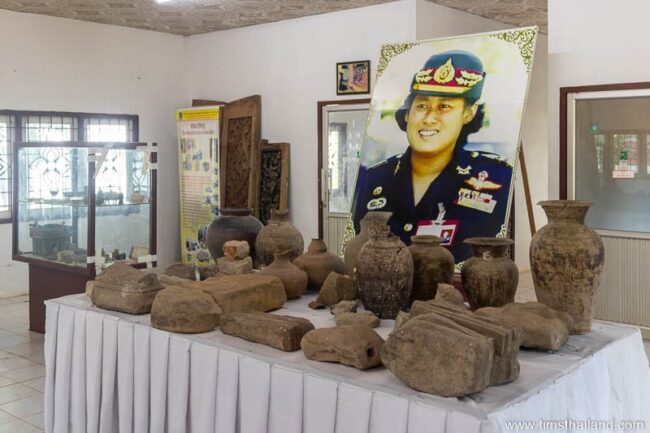
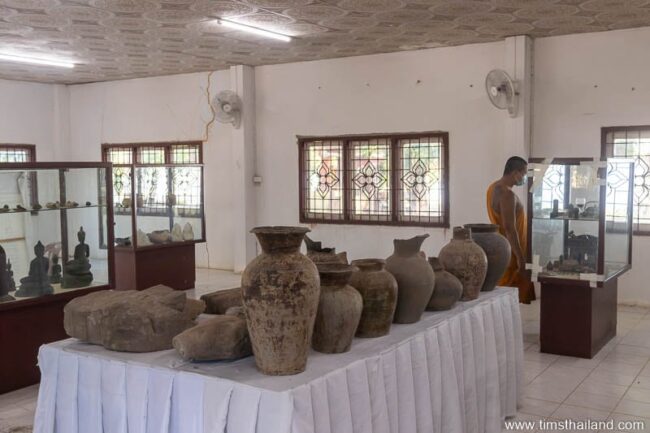
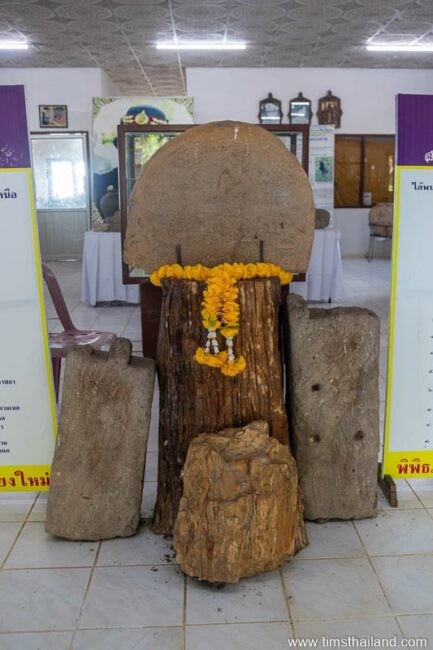
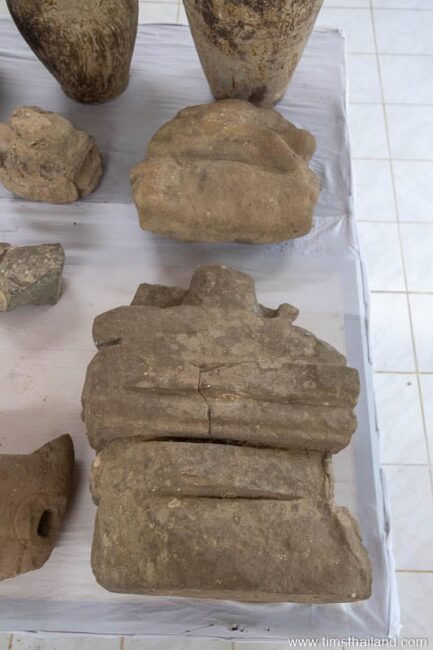
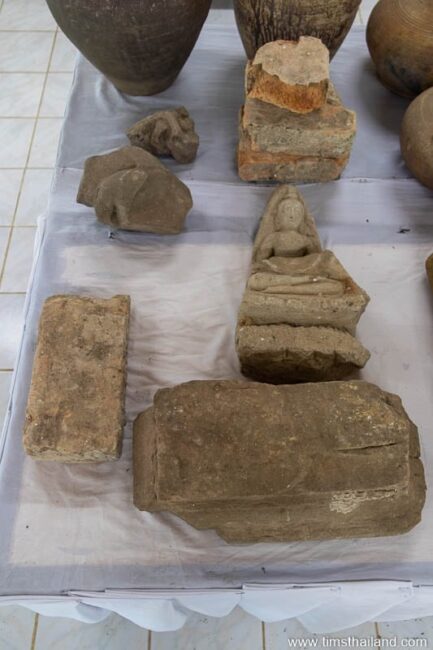
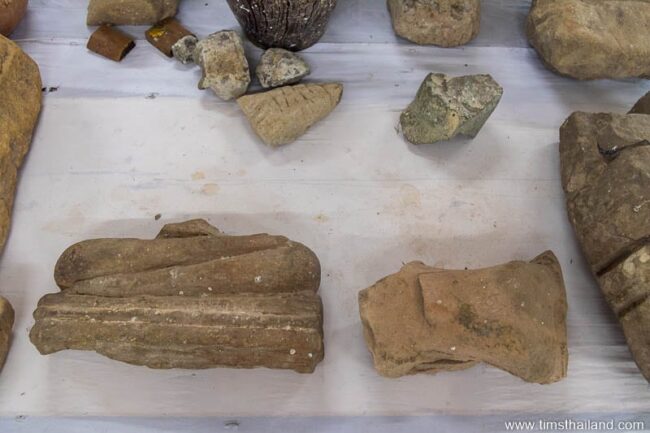
The temple on the other side of the village, Wat Maha Phom Phothirat (วัดมหาพรหมโพธิราช), also acquired a few Khmer artefacts presumed to be from Wat Pa Eo Kan. A 60cm-tall sandstone Buddha attached to a slab on its back, a naga antefix, and a few smaller fragments are kept in a store room, along some Dvaravati and other relics found in the area. These are not normally shown to the general public. (You need permission from the abbot to get inside and he’s apparently seldom keen to grant it. If you want to try, it might help to call ahead, 090-2136191.) Besides these, there is a small pedestal inside the new wihan being built for a Buddha footprint shrine.
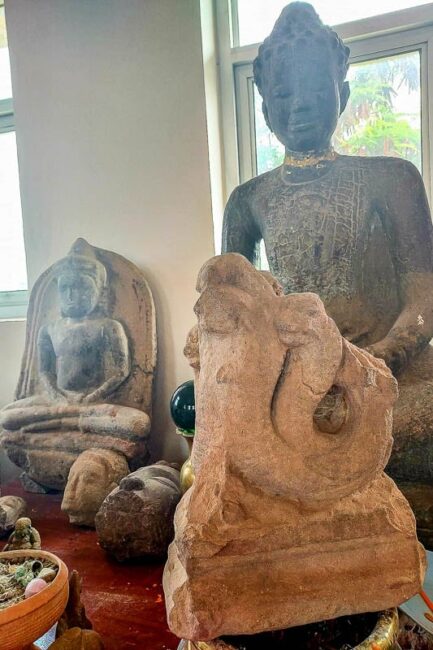
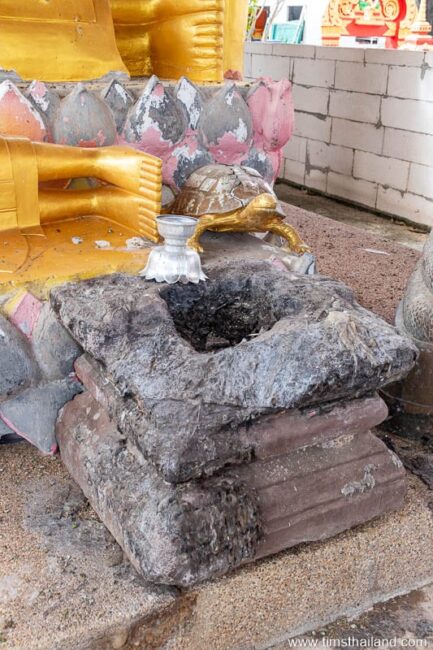
Location – Wat Pa Eo Kan, Ban Tawat, Tambon Lao Po Daeng, Amphoe Mueang, Sakon Nakhon Province
Wat Maha Phom Phothirat Buddha and naga photo by พร มหาพรหม from the ปราสาทหินถิ่นแดนไทย (Thai Prasat) Facebook group.